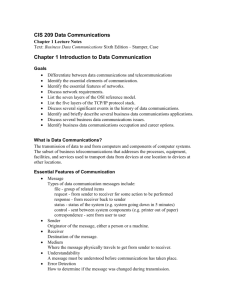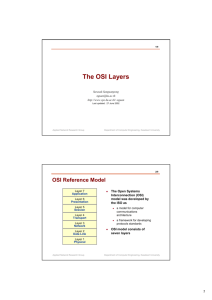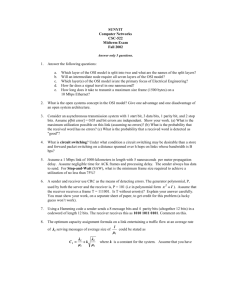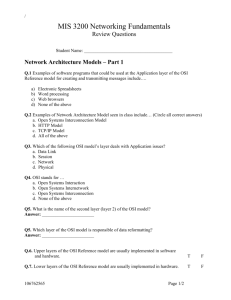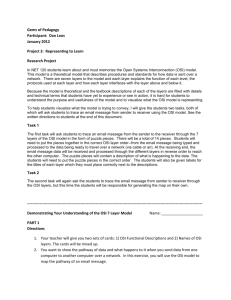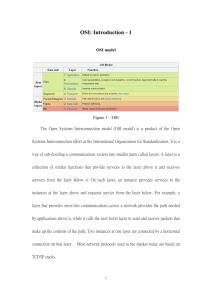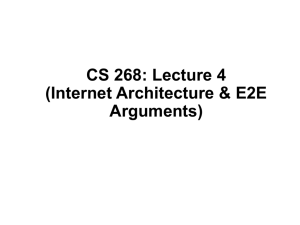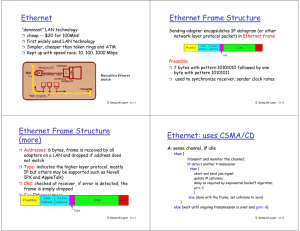Chapter 1 Introduction to Computer Networks and Data
advertisement
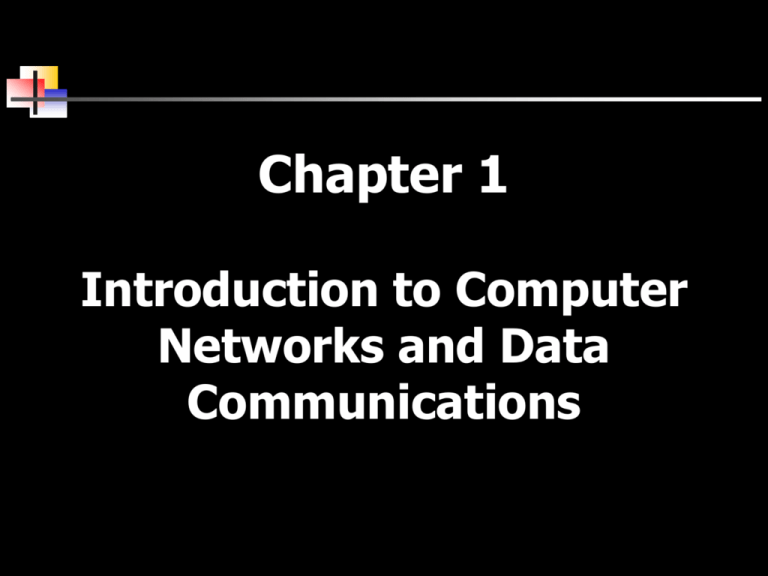
Chapter 1 Introduction to Computer Networks and Data Communications Communication The transmission of a signal by way of a medium from sender to receiver Sender Signal Receiver Transmission medium 2 Communication Problems Completeness & comprehension Attenuation & noises Competing resources Routing & addressing Security 3 Networks Computer network Voice network Data network Local area network Metropolitan area network Wide area network Personal area network Network management 4 Data Communications Data Communications: The movement of computer information (data) from one point to another by means of electrical or optical transmission systems Is a sub-field of telecommunications Telecommunications: Includes the transmission of voice and video as well as data 5 Network Configurations Microcomputer-to-local area network Microcomputer-to-Internet Local area network-to-local area network Personal area network-to-workstation Local area network-to-metropolitan area network Local area network-to-wide area network Wide area network-to-wide area network Sensor-to-local area network Satellite and microwave Cell phones Terminal/microcomputer-to-mainframe computer 6 Convergence An Additional Basic Connection – telephone- to-network Telephone systems are ubiquitous and now carry more data than voice Common configuration – telephone connected to POTS Newer configuration (VoIP) – telephone-to-LAN via gateway or telephone to gateway via DSL/cable 7 Network Components Hardware Computer Network Interface Card (NIC) Hub Switch Bridge Router Software Network protocols 8 Network Architectures A reference model that describes the layers of hardware and software necessary to transmit data between two points or for multiple devices / applications to interoperate Reference models are necessary to increase likelihood that different components from different manufacturers will converse Two models to learn: OSI model and TCP/IP protocol suite 9 The OSI Model Application (7) User input to host Presentation (6) Data coding, formatting Session (5) Begin, frames, end, rules Transport (4) End-to-end delivery Network (3) Message routing Datalink (2) Frame formatting, error Physical (1) Physical connections 10 OSI vs. The Internet Application Application Application Transport Transport Transport Network Network Network Presentation Session Datalink Physical Interface Network Access Physical 11 Logical vs. Physical Connection Application Application Presentation Presentation Session Session Transport Transport Network Network Datalink Datalink Physical Physical 12 13

